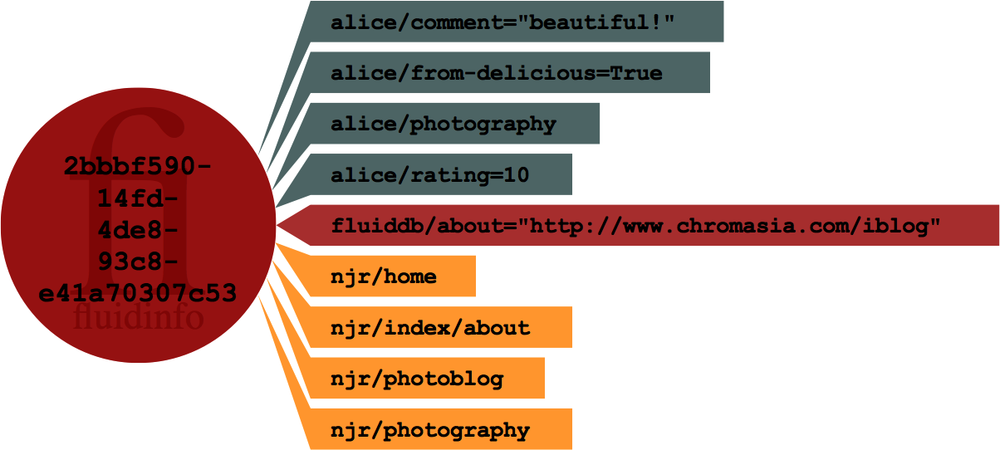Chapter 2. Fluidinfo from the Command Line
In this chapter we will use a command-line tool, Fish (the Fluidinfo Shell), to interact with Fluidinfo. Fish provides a convenient way to interact with Fluidinfo even if your primary access is programmatic or through a graphical tool such as the Fluidinfo website.
There are two versions of Fish: a convenient web-based application and a more powerful command-line version.
The online version, Shell-Fish, requires you to log in with a Google account. Once authenticated, go to your settings and enter your Fluidinfo username and password. If you haven’t done so yet, you can get these by signing up at http://fluidinfo.com/accounts/new/, as described in Signing Up for a Fluidinfo Account.
To gain the full power of Fish, you should install it on your system
by going to Github,
downloading the Python source, and following the instructions in the
README file.
Getting Started with the Tags, Show, and Get Commands
Many people store bookmarks to web pages in Fluidinfo, normally using the URL as the about tag. For example, Figure 2-1 shows a graphic view of the object with the about tag http://www.chromasia.com/iblog.

Figure 2-1. The Fluidinfo object for the URL http://www.chromasia.com/iblog
We can use Fish to view all the tags on this object by saying:
$ fish tags -a 'http://www.chromasia.com/iblog'Note
If you are using the online version, the fish at the start ...
Get Getting Started with Fluidinfo now with the O’Reilly learning platform.
O’Reilly members experience books, live events, courses curated by job role, and more from O’Reilly and nearly 200 top publishers.

